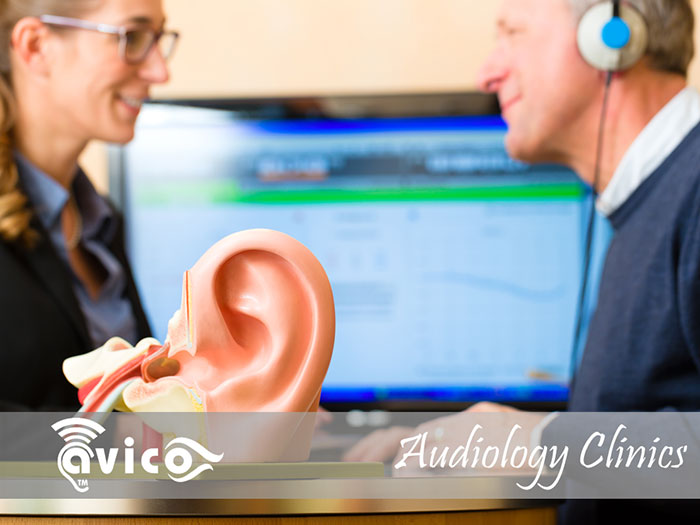
Otoscopy is conducted by the audiologist to evaluate the status of the external auditory canal and the tympanic membrane (eardrum) including wax impaction, ear infections, eardrum perforations, etc.
These procedures evaluate the middle ear function by measuring the tympanic membrane compliance, the external ear canal volume, and the pressure changes inside the middle ear cavity, as well as the function of the middle ear muscles. These tests usually reveal middle ear infection, tympanic membrane stiffness or perforation, and abnormalities in the function of the middle ear muscles.
This test evaluates the hearing level of adults in a sound treated booth. In pure tone audiometry, the examiner presents several individual tones at different frequencies and intensities through the headphone mounted on the patient’s ears. The patient is instructed to push a button or raise his hand every time he hears the sound, allowing the examiner to identify the patient’s hearing level. In speech audiometry, the examiner presents several standardized words, and the patient is instructed to repeat the words as heard. This test allows the examiner to identify the patient’s speech reception threshold, and the word recognition score.
This hearing test is designed to evaluate the hearing of children from 6 months to two-years of age in a sound treated booth. The test includes the presentation of individual tones at different frequencies and intensities, from different directions inside the room. Children tend to search for the sound source by turning their heads or eyes toward the loudspeaker that produced the sound. After the child turns toward the sound source, the examiner displays a dancing toy or a cartoon as a reinforcement to encourage the child to continue searching for the sound source every time the sound is heard during the test. The child’s head or eye turn toward the sound source is considered as the child’s response to the heard sound.
This test evaluates the hearing of children from two to five years of age in a sound treated booth. During this test, the examiner presents several individual tones at different frequencies and intensities through the headphone or the loudspeaker. Each time the sound is presented, the child responds if he hears the sound by doing a certain task in a game context such as throwing a cube inside a bucket each time the child hears the sound. The child’s response to each sound allows the examiner to evaluate the child’s hearing level.
These tests are usually used to assess the level of hearing in children who are unable to interact with the examiner during the traditional hearing tests (i.e. visual reinforcement audiometry and play audiometry). Also, these tests can be used for all age groups to diagnose many neurological disorders that affect the hearing level. During these tests, the examiner attaches electrodes to certain areas on the patient’s head to record the neural signals emitted from different regions of the auditory nervous system. Some test results require further analysis by the audiologist to conclude the final diagnosis such as (auditory brainstem response – ABR) and (electrocochleography – ECochG used for the diagnosis of Meniere’s disease), etc, while other test results are analyzed automatically by the testing software (such as auditory steady state response – ASSR).
The cochlea contains a specific type of sensory cells called the outer hair cells (OHCs). These cells have the capability of changing their length in response to sound. This action of the OHCs is called micromotility, and it produces very soft sounds that can be recorded by a delicate microphone in the external auditory canal, in a procedure called otoacoustic emissions (OAEs). This test is used to evaluate the health of the OHCs within the cochlea by recording the OHCs emitted sounds in the external auditory canal.
